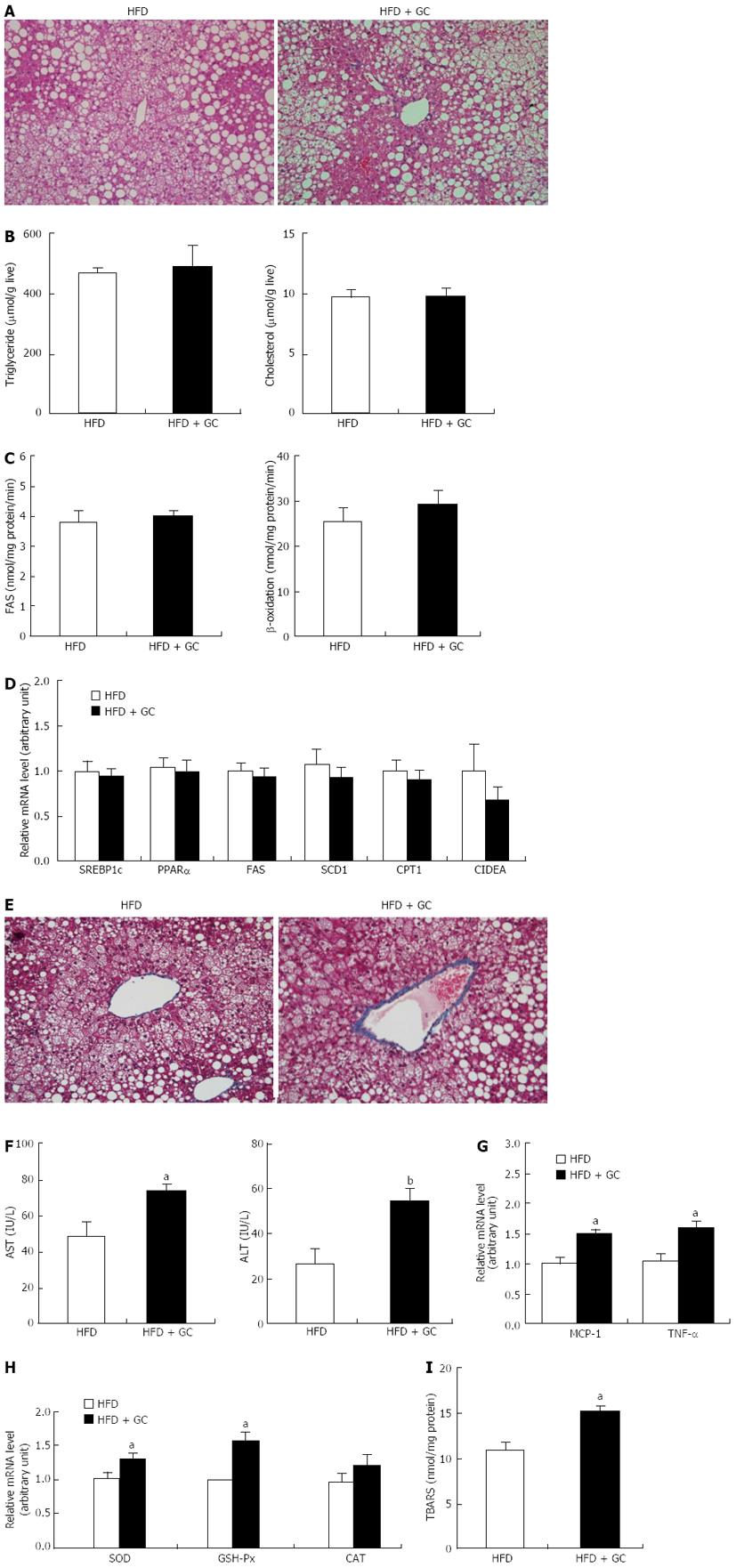Copyright
©2013 Baishideng Publishing Group Co.
World J Gastroenterol. Aug 7, 2013; 19(29): 4689-4701
Published online Aug 7, 2013. doi: 10.3748/wjg.v19.i29.4689
Published online Aug 7, 2013. doi: 10.3748/wjg.v19.i29.4689
Figure 4 Long-term Garcinia Cambogia supplementation did not affect high-fat diet-induced hepatic steatosis but increased hepatic collagen accumulation, inflammation and oxidative stress.
A: The liver tissue sections were stained with hematoxylin and eosin; B: Triglyceride and cholesterol level; C: Fatty acid synthase (FAS) and β-oxidation level; D: Relative mRNA level; E: The liver tissue sections were stained with Masson’s trichrome; F: Alanine aminotransferase (ALT) and aspartate aminotransferase (AST) level; G, H: Relative mRNA level; I: thiobarbituric acid-reactive substances (TBARS) concentration. Representative images are shown (original magnification × 200). Data are expressed as the mean ± SE (n = 10). High-fat diet (HFD), mice fed a high-fat diet alone; HFD + Garcinia Cambogia (GC), mice fed a high-fat diet containing GC (1%, w/w). aP < 0.05, bP < 0.01 vs control group. CAT: Catalase; CIDEA: Cell death-inducing DNA fragmentation factor-α-like effector A; CPT: Carnitine palmitoyltransferase; FAS: Fatty acid synthase; GSH-Px: Glutathione peroxidase; MCP-1: Monocyte chemoattractant protein-1; PPARα: Peroxisome proliferator-activated receptor α; SCD1: Stearoyl-CoA desaturase; SOD: Superoxide dismutase; SREBP1c: Sterol-regulatory-element-binding protein 1c; TNF-α: Tumor necrosis factor-α.
-
Citation: Kim YJ, Choi MS, Park YB, Kim SR, Lee MK, Jung UJ.
Garcinia Cambogia attenuates diet-induced adiposity but exacerbates hepatic collagen accumulation and inflammation. World J Gastroenterol 2013; 19(29): 4689-4701 - URL: https://www.wjgnet.com/1007-9327/full/v19/i29/4689.htm
- DOI: https://dx.doi.org/10.3748/wjg.v19.i29.4689









